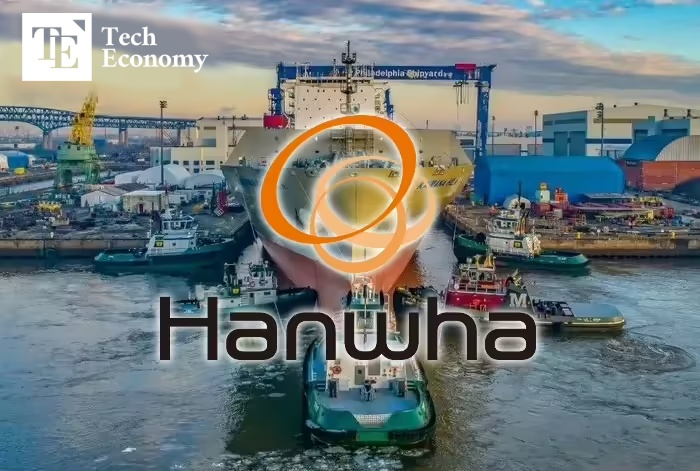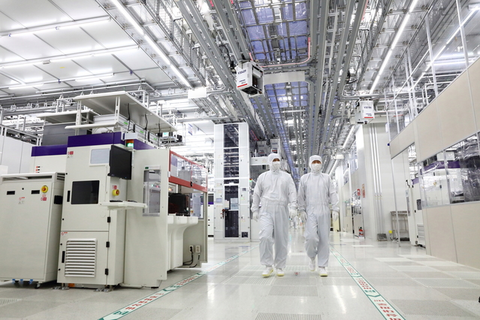“Called It an Opportunity, but Left Empty-Handed” — Korean Shipbuilders Lose Out in First U.S. Navy MRO Contract Bid
Input
Modified
A Shocking Defeat to Singapore — Left with No Results Voices Within: ‘Overconfidence Was the Problem’ The Limits of Relying on Advanced Technology Packaging Are Now Plain to See

For South Korea’s leading shipbuilders, what was widely regarded as a breakthrough opportunity to enter the lucrative U.S. defense maintenance market has ended in disappointment. HD Hyundai Heavy Industries and Hanwha Ocean, two giants of the Korean shipbuilding industry, have both failed in their bids for the U.S. Navy’s first Maintenance, Repair, and Overhaul (MRO) contract. Despite their enormous investments, cutting-edge technology, and sophisticated operational systems, both companies were unable to meet the strict procurement standards set by the U.S. military, which prioritizes price competitiveness and delivery performance over technical excellence.
This defeat was more than just a missed contract; it was a harsh reality check that exposed the structural limitations embedded in Korea’s overseas strategies for defense contracting. While both companies had placed substantial hope on cracking the U.S. market, the setback extended beyond America. Hanwha Ocean, simultaneously pursuing a deal with the Royal Thai Navy for its second frigate project, has also faced continued delays and frustrations. Despite emphasizing a well-worn localization strategy coupled with promises of technology transfer, the Thai contract remains unsigned, compounding doubts over whether Korea’s established approaches are still viable in today’s highly competitive global defense landscape.
Falling Short in a USD 7 Billion Market
The U.S. Navy’s MRO market, valued at between USD 6-7.4 billion annually, was seen as a golden gateway for Korean shipbuilders looking to transition from commercial success into the defense maintenance sector. The recent bid, administered by the U.S. Military Sealift Command, was for the maintenance of a logistics support ship assigned to the 7th Fleet. Industry expectations were high, with Korean contenders positioned as serious candidates thanks to their reputation as world-class builders and their recent strategic investments to penetrate the U.S. defense market.
However, the final results were disheartening. A Singaporean company emerged victorious, leaving both HD Hyundai and Hanwha Ocean empty-handed. This outcome was particularly striking given that both companies had been highlighted as key potential partners in the U.S. government’s broader efforts to revitalize domestic shipbuilding capabilities. Over the past several years, they had poured substantial resources into establishing robust U.S.-based supply chains, building maintenance infrastructure, and creating dedicated teams aimed at satisfying the stringent requirements of the U.S. military procurement system.
Yet, the outcome revealed a glaring mismatch between their preparation and the procurement realities of the U.S. Navy. Unlike shipbuilding contracts, which often reward technical sophistication and engineering excellence, MRO contracts are governed by a far more rigid set of priorities, where price competitiveness, strict delivery timelines, and operational efficiency eclipse technological prowess. The bidding process was conducted under an open competition framework, meaning that any eligible company could compete without restrictions, and that the contract would ultimately go to the lowest responsible bidder.
One industry insider succinctly summarized the situation, explaining that the bid imposed no conditions or entry barriers. As a result, the deciding factor was overwhelmingly price, rendering technical advantages irrelevant. The imbalance became so evident during the bidding process that Hanwha Ocean, recognizing that the profit margins were far lower than anticipated, chose to withdraw midway rather than continue investing resources into what had become an unviable prospect.
Adding to the weight of this failure is the fact that this contract was not merely a single opportunity but a crucial entry point into a much larger pipeline of future projects. According to the U.S. Government Accountability Office, the U.S. Navy allocates billions annually toward the maintenance and repair of its fleets, and securing this initial contract would have likely positioned the winner for subsequent multi-year, multi-billion-dollar projects. Both HD Hyundai and Hanwha Ocean had structured their U.S. expansion plans around this vision, ramping up investments and forging relationships within the U.S. defense ecosystem. Despite backing from the Korean government, which championed this effort as part of its “K-Shipbuilding Global Expansion” initiative, both firms now find themselves back at square one.
Misalignment of Strategy and Market Reality
The consequences of this failure extend far beyond a lost contract. It has exposed a profound misalignment between the assumptions driving Korean shipbuilders’ global strategies and the operational realities of international defense markets, particularly in the United States. For decades, Korea’s shipbuilding industry has relied on its undisputed technological edge, engineering precision, and manufacturing excellence to dominate global markets. But the U.S. defense maintenance market operates under fundamentally different dynamics.
In this space, procurement decisions prioritize the most economically efficient, timely, and operationally reliable offers, rather than the most technologically advanced ones. The U.S. Navy, along with most arms of the Department of Defense, evaluates bids based primarily on price, proven delivery performance, operational efficiency, and an applicant’s prior track record within the U.S. procurement framework. Technical sophistication, while valuable, plays only a secondary role in the evaluation process.
This was not merely anecdotal but officially codified. The Government Accountability Office made it explicitly clear in its 2024 report that price competitiveness and past performance are the core determinants in awarding MRO contracts. Korean companies entered the bid under the assumption that their technological superiority and innovative maintenance systems would compensate for their lack of localized operational history, but this assumption proved fatally flawed.
HD Hyundai’s position was particularly precarious, as it entered the bidding process with no prior pilot projects or trial contracts within the U.S. maintenance ecosystem. The absence of verified performance data proved to be a critical weakness. Meanwhile, Hanwha Ocean had managed to secure smaller maintenance deals in the past, including contracts for the USNS Wally Schirra and the USNS Yukon. These allowed it to demonstrate advanced capabilities, such as detecting structural defects early through the use of high-pressure cleaning robots and reverse engineering technologies. However, these achievements were not sufficient to overcome the overwhelming weight placed on price and delivery guarantees.
The harsh truth is that what Korean companies brought to the table — advanced technologies, sophisticated maintenance systems, and a long-term vision — did not align with what the U.S. Navy’s procurement officers were primarily seeking. Their failure highlights a strategic blind spot: the assumption that technical superiority alone could compensate for the lack of a local operational track record and the inability to meet aggressive pricing and delivery expectations.
This is not just a tactical error but a systemic problem that suggests a larger failure to adapt to the evolving nature of global defense procurement. As geopolitical uncertainties rise, defense buyers are increasingly focused on price efficiency, supply chain resilience, and the assurance of local operational support. Korea’s traditional model, heavily reliant on its manufacturing excellence, appears increasingly ill-suited to this new reality.

The Urgent Need for a Strategic Pivot
Despite the setback in the United States, Hanwha Ocean remains committed to expanding its footprint in the global defense sector. Its current focus has shifted toward Southeast Asia, where it is actively competing for the Royal Thai Navy’s second frigate project. The company has doubled down on a localization and technology transfer strategy, offering a comprehensive package that includes a lifecycle maintenance roadmap, a detailed technology transfer plan, and the establishment of local maintenance facilities in Thailand.
This strategy is not new. It is modeled on the approach that proved successful when Hanwha exported its first frigate to the Thai Navy in 2020. At the time, the deal was celebrated as a landmark achievement, reinforcing Korea’s position as an emerging defense exporter in the region. However, the follow-up has proven significantly more complicated. Despite having been viewed as a frontrunner in the early stages of negotiations, Hanwha has yet to secure the contract. The Thai Navy continues to encourage competitive bidding from multiple countries, extending the negotiation process far beyond initial expectations.
Korea’s emphasis on technical superiority and operational stability, while undeniably strong, has yet again failed to deliver a decisive advantage in terms of pricing and delivery commitments, the very same factors that undermined its bid in the United States. The longer the negotiations drag on, the more pressure mounts on Hanwha, not only to secure the contract but also to prove that its approach to international defense sales remains effective.
Experts within Korea are increasingly sounding the alarm. The Korea Institute for Industrial Economics and Trade, in its recent report titled “Comprehensive Competitiveness in the Shipbuilding Value Chain and New Korean Maritime Strategy Directions,” has made it clear that the Korean shipbuilding industry must undergo a fundamental transformation. The report warns that the longstanding reliance on technology-first, vision-driven strategies is no longer adequate for navigating the complexities of today’s defense procurement landscape.
The institute stresses that the future success of Korea’s shipbuilders depends on their ability to align their strategies with the specific procurement standards, operational practices, and evaluation criteria of each target country. It is no longer sufficient to lead with technological excellence alone. What is now required is a far more pragmatic approach, one that balances Korea’s technological strengths with competitive pricing, robust local partnerships, demonstrable delivery reliability, and an operational presence that can meet the expectations of defense customers worldwide.
This latest string of failures serves as a sobering reminder that in the world of international defense contracting, even the most sophisticated technology cannot substitute for the fundamentals of trust-building, cost competitiveness, and operational readiness. Korea’s shipbuilders are now at a critical crossroads, facing an urgent need to evolve their strategies if they hope to secure a meaningful role in the next generation of global defense supply chains.





















